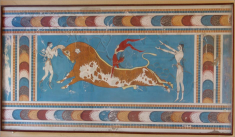Speaker
Description
Quantum noise (QN), due to the contribution of Shot Noise (SN) and Radiation Pressure Noise (RPN), is one of the major limiting contributions to the sensitivity of ground-based Gravitational Waves (GW) detectors, such as Virgo and LIGO.
Frequency-independent squeezing (FIS) setups, introduced prior to the latest observing run O3, where proven to reduce QN in the high-frequency range, where SN dominates (>200 Hz), in both Virgo and LIGO [1, 5, 8]. In the meantime, FIS injection produced a small increase of QN at low frequency due to RPN [1, 2]. Hence, starting from the next observing run O4, a broadband QN reduction (10Hz-1kHz) is an unavoidable upgrade in GW detectors. The technique currently adopted in LIGO and Virgo detectors consists of a FIS source coupled to a 300 m long detuned filter cavity, which produces in reflection frequency-dependent squeezing (FDS) [8].
Looking forward, the development of more compact FDS setups is crucial for the third generation (3G) detectors such as the Einstein Telescope (ET). With the collaboration of serveral INFN teams, Italian Universities and the Korea Astronomy and Space Sciente Institute (KASI) we are developing two table-top experiments for the FDS generation: one based on the ponderomotive squeezing and one based on the Einstein Podolsky Rosen (EPR) quantum entanglement. The former, called SIPS (suspended interferometer for ponderomotive squeezing), is a small-scale interferometer with monolithic suspension of test masses designed to be sensitive to the radiation pressure in the detection band of GW detectors [3, 4, 6]. The latter aims at producing two squeezed EPR-entangled states that can be obtained by pumping an Optical Parametric Oscillator (OPO) cavity with a second harmonic detuned beam (see Dr. V. Sequino’s talk) [7]. EPR technique, before the implementation in large scale GW detectors such as Virgo, needs to be tested in an optical cavity achieving the radiation pressure noise limit. Therefore, SIPS turns out to be a suitable test bench for the EPR technique before the integration in Virgo [4, 7]. In this talk the status of the SIPS experiment and the design for the integration with the EPR experiment at the EGO (Virgo site) R&D squeezing laboratory will be presented.
Bibliography:
[1] Acernese et al, Phys. Rev. Lett. 123, 231108 (2019)
[2] Acernese et al, Phys. Rev. Lett. 125, 131101 (2020)
[3] DiPace2020] Di Pace S et al, European Physical Journal D 74, 227 (2020)
[4] Di Pace S et al, Proceedings of the GRavitational-waves Science&technology Symposium (GRASS) 2019
[5] Di Pace S on behalf of the Virgo Co., Physica Scripta 96, 12, 124054 (2021)
[6] Giacoppo L, Di Pace S et al, Physica Scripta 96, 11, 114007 (2021)
[7] Sequino V, Di Pace S et al, EPR experiment for a broadband quantum noise reduction in GW detectors, Proceedings of the GWs Science & technology Symposium (GRASS) 2019
[8] [Sequino2021] Sequino V, Physica Scripta 96, 10, 104014 (2021)
Details
Dr. Sibilla DI PACE, RTDA-Assistant Professor,
Sapienza University of Rome, and INFN Rome (ITALY)
https://corsidilaurea.uniroma1.it/it/users/sibilladipaceuniroma1it
| Is this abstract from experiment? | Yes |
|---|---|
| Name of experiment and experimental site | Suspended Interferometer for Ponderomotive Squeezing and EPR / R&D squeezing at EGO Virgo site |
| Is the speaker for that presentation defined? | Yes |
| Internet talk | Yes |
